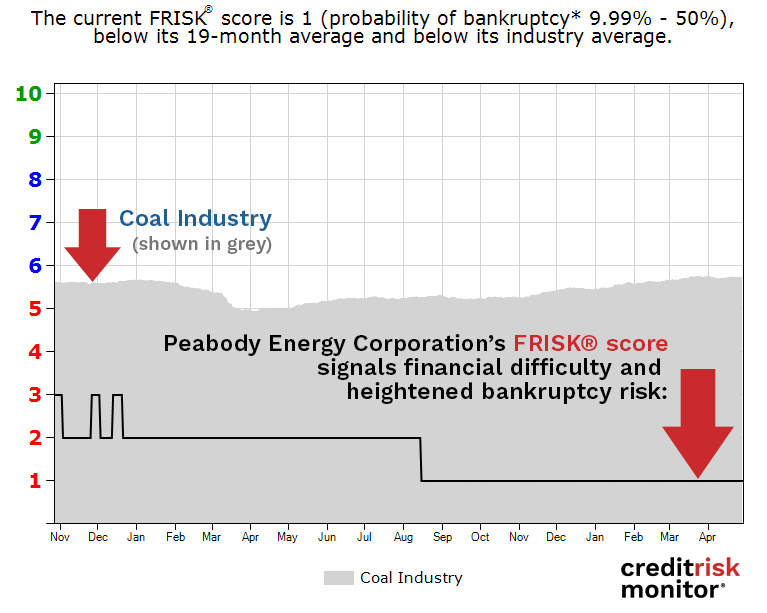Midwestern coal leader Peabody Energy Corporation is feeling the headwinds of a political and economically progressive shift towards cleaner energy sources like wind, solar, and natural gas. The debt pressure Peabody Energy is under won't produce diamonds, but it may lead to bankruptcy.
The company's FRISK® score has been positively subterranean, sitting at a rock-bottom "1" since last summer. This indicates to our subscribers that Peabody Energy is up to 50x more likely to face bankruptcy on a given day than the average publicly traded company.

Our FRISK® Score model incorporates four powerful risk inputs:
- “Merton”-type model of stock market capitalization and volatility
- Financial ratios, including those used in the Altman Z”-Score Model
- Agency ratings
- Website click pattern data from CreditRiskMonitor® subscribers, representing key credit decision-makers at nearly 40% of current Fortune 1000 companies plus thousands of other large companies worldwide
Since the start of 2017, the FRISK® Score’s rate of success in capturing public company bankruptcy is 96%. In any given year, you can count on one hand the times we miss – and in those outlier cases, the circumstances deal with unusual, unforeseen events such as natural disasters and CEO fraud.
Download the free report to learn more.
About High Risk Reports
Our High Risk Reports feature companies that are exhibiting a significantly high level of financial distress, as indicated by our proprietary FRISK® Score.
The reports highlight the factors that have pushed a company's score lower on the "1" (worst) to "10" (best) FRISK® Score, which is 96% accurate in predicting bankruptcy over a 12-month period. The High Risk Reports also includes analysis on financial indicators such as the company’s DBT index, stock performance, financial ratios and how it is performing relative to its industry peers.
The ultimate goal of the High Risk Report series is two-part: provide an early warning for those doing business with an increasingly distressed company and inform of the many signals that should be examined when assessing financial risks.